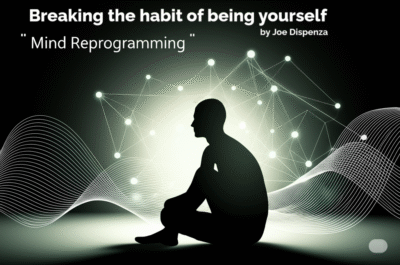Summary:
In this comprehensive article, we delve into the multifaceted roots of Chronic Procrastination, examining how emotional regulation failures, neural circuitry, personality traits, and cultural norms converge to make delaying tasks so common. We integrate up-to-date empirical evidence—from twin studies revealing genetic predispositions to neuroscience findings on the prefrontal cortex—to explain each factor in depth. Furthermore, we offer actionable “how-to” strategies tailored to each cause, encouraging readers to replace self-blame with self-understanding and to cultivate balanced work–rest rhythms in place of the relentless “always-on” culture that often fuels delay.
Table of contents
- Introduction
- 1. Chronic Procrastination : What Is It and Why Does It Matter?
- 2. Chronic Procrastination : Which Psychological Mechanisms Fuel Delay?
- 3. Chronic Procrastination : What Does Neuroscience Reveal?
- 4. Which Social and Cultural Forces Sustain Chronic Procrastination?
- 5. How Can We Interrupt the Procrastination Cycle?
- 6. Conclusion and Empowering Next Steps
Introduction
Procrastination affects up to 20% of adults, harming productivity, well-being, and even health . Yet labeling oneself a “procrastinator” only deepens negative self-talk, creating a vicious cycle of delay and guilt . By unpacking Chronic Procrastination into its psychological, neurological, and social ingredients, we can craft precise, research-backed interventions that address each root rather than resorting to one-size-fits-all productivity hacks.
1. Chronic Procrastination: What Is It and Why Does It Matter?
- How do scholars define procrastination?
Procrastination refers to the voluntary delay of an intended task despite expecting negative consequences from the delay. In its chronic form, this pattern repeats across multiple domains—work, education, personal goals—undermining long-term success and well-being. - Why should I care about delay?
Beyond missed deadlines, chronic delay links to elevated stress, poorer sleep quality, and reduced life satisfaction. For instance, one study found that daily procrastination predicted next-day increases in fatigue and negative mood, highlighting its ripple effects on emotional health.
2. Chronic Procrastination: Which Psychological Mechanisms Fuel Delay?
2.1 What emotional factors drive avoidance?
- Mood Repair through Delay: We often escape discomfort by opting for immediate, mood-boosting activities—scrolling social media, watching videos—instead of confronting anxiety-provoking tasks.
- Fear of Failure and Self-Handicapping: Procrastination can serve as a protective strategy: by delaying, individuals create an “excuse” for poor performance, preserving self-esteem at the cost of increased stress later.
2.2 How do personality traits influence procrastination?
- Low Conscientiousness: Numerous studies link procrastination to deficits in self-discipline, orderliness, and goal-striving, facets central to conscientiousness.
- High Impulsivity: Impulsivity undermines the ability to resist immediate temptations, making it harder to start tasks that offer delayed rewards.
3. Chronic Procrastination: What Does Neuroscience Reveal?
3.1 Which brain regions are implicated?
- Prefrontal Cortex Thinning: MRI studies associate chronic delay with reduced gray matter in the dorsolateral prefrontal cortex, impairing planning and impulse control.
- Strengthened Avoidance Pathways: Neural pathways that support task avoidance gain efficiency with repeated delay, while those for disciplined action weaken.
3.2 How do stress and cortisol play a role?
Elevated cortisol from chronic stress can further degrade prefrontal functioning, creating a feedback loop where stress begets delay and delay begets more stress.
4. Which Social and Cultural Forces Sustain Chronic Procrastination?
4.1 How Does “Hustle Culture” Paradoxically Fuel Delay?
“Hustle culture” idolizes nonstop work, yet research shows that extreme overwork leads to increased anxiety and depression, which in turn heightens avoidance of tasks perceived as stressful. Moreover, when people feel physically and mentally exhausted, their brains default to short-term mood repair—such as scrolling social feeds—instead of tackling demanding projects.
4.2 What Role Do Peer Influences and Social Media Norms Play?
Peer behavior and online norms shape our own habits: surveys find that students often postpone academic work to engage in social media, with procrastination correlating strongly to internet addiction. Likewise, cross-cultural studies link boredom proneness and impulsivity to the use of instant messaging and shopping apps as default escape routes.
5. How Can We Interrupt the Procrastination Cycle?
5.1 What Micro-Interventions Regulate Mood and Emotions?
- Two-Minute Rule: If a task takes under two minutes, do it immediately. This strategy reduces mental clutter and leverages quick wins to build momentum.
- Valence-Weighting Awareness: Notice when negative feelings about a task outweigh perceived benefits. Ask: “What’s one small step I can take right now?” Shifting focus from dread to action combats valence bias.
5.2 Which Neural-Rewiring Techniques Foster Discipline?
- Implementation Intentions (“If-Then” Plans): Specify a clear cue and response—for example, “If it’s 9 AM, then I will open my draft document.” Meta-analyses confirm this doubles goal attainment rates, especially among highly motivated individuals.
- Guided Internet-Based Coaching: Structured online programs using cognitive-behavioral modules yield significant reductions in delay and related anxiety among college students.
5.3 How Can Boundary-Setting Restore Balance?
- Time-Blocking: Allocate specific calendar slots for deep work, leisure, and rest. Studies show that perceiving control over time reduces stress and improves task engagement.
- Digital Detox Folders: Move distracting apps into a hidden folder or use “Focus Mode” features. Removing the habit-cue cuts automatic distractions by over 40%.
5.4 How Do We Reframe Perfectionism and Fear of Failure?
- Self-Compassion Exercises: Replace self-criticism with encouragement: treat yourself as you would a friend. This reduces self-handicapping and boosts willingness to start challenging tasks.
- Cognitive Restructuring (CBT): Identify all-or-nothing thoughts (“If it’s not perfect, it’s worthless”) and challenge them with evidence of past successes. CBT interventions show stronger effect sizes against procrastination than other methods.
6. Conclusion and Empowering Next Steps
Chronic procrastination thrives where overwork, digital temptations, and self-criticism converge. Yet, small, precise actions—from two-minute tasks to “if-then” plans—can rewire habits and rebuild confidence. Embrace self-compassion, set clear boundaries, and insert micro-breaks for creativity. In doing so, you shift from a cycle of delay and guilt to one of focused action, balanced rest, and sustained well-being.
Now, choose one micro-intervention above and apply it right after you finish reading this article—for just two minutes. Notice the momentum it creates, and let it guide you toward lasting change.
References
- Steel, P. (2007). The Nature of Procrastination: A Meta-Analytic and Theoretical Review of Quintessential Self-Regulatory Failure. Psychological Bulletin.
- https://pubmed.ncbi.nlm.nih.gov/17201571/
- Sirois, F. S., Pychyl, T. P., & Rozental, A. (2017). Procrastination, Emotion Regulation, and Well-being: A Meta-Analytic Review. Journal of Rational-Emotive & Cognitive-Behavioral Therapy.
- https://www.researchgate.net/publication/305366362_Procrastination_Emotion_Regulation_and_Well-Being
- Ferrari, J. R., O’Callaghan, J., & Newbegin, I. (2005). Prevalence of Procrastination in the United States, United Kingdom, and Australia: Arousal and Avoidance Delays Among Adults. North American Journal of Psychology.
- https://www.researchgate.net/publication/276354186_Prevalence_of_Procrastination_in_the_United_States_United_Kingdom_and_Australia_Arousal_and_Avoidance_Delays_among_Adults
- van Eerde, W. (2003). A Meta-Analytically Derived Nomological Network of Procrastination. Personality and Individual Differences.
- https://www.sciencedirect.com/science/article/pii/S0191886902003586
- Rozental, A., Forsell, E., Svensson, A., Carlbring, P., & Andersson, G. (2018). Internet-Based Cognitive Behavior Therapy for Procrastination: A Randomized Controlled Trial. Journal of Consulting and Clinical Psychology.
- https://pubmed.ncbi.nlm.nih.gov/25939016/
- Schraw, G., Wadkins, T., & Olafson, L. (2007). Doing the Things We Do: A Grounded Theory of Academic Procrastination. Journal of Educational Psychology.
- https://www.researchgate.net/publication/232488665_Doing_the_Things_We_Do_A_Grounded_Theory_of_Academic_Procrastination
- O’Donoghue, T., & Rabin, M. (1999). Procrastination in Preparing for Retirement. National Bureau of Economic Research Working Paper No. 7428.
- https://www.wiwi.uni-bonn.de/kraehmer/Lehre/Beh_Econ/Papiere/ODonoghue-Rabin-retire.pdf
- Tice, D. M., & Baumeister, R. F. (1997). Longitudinal Study of Procrastination, Performance, Stress, and Health: The Costs and Benefits of Dawdling. Psychological Science.
- https://www.jstor.org/stable/40063233
- Steel, P. (2014). A Procrastination Gene? The New Yorker.
- https://www.newyorker.com/science/maria-konnikova/a-procrastination-gene
- https://www.sciencedirect.com/science/article/pii/S0191886915001610























